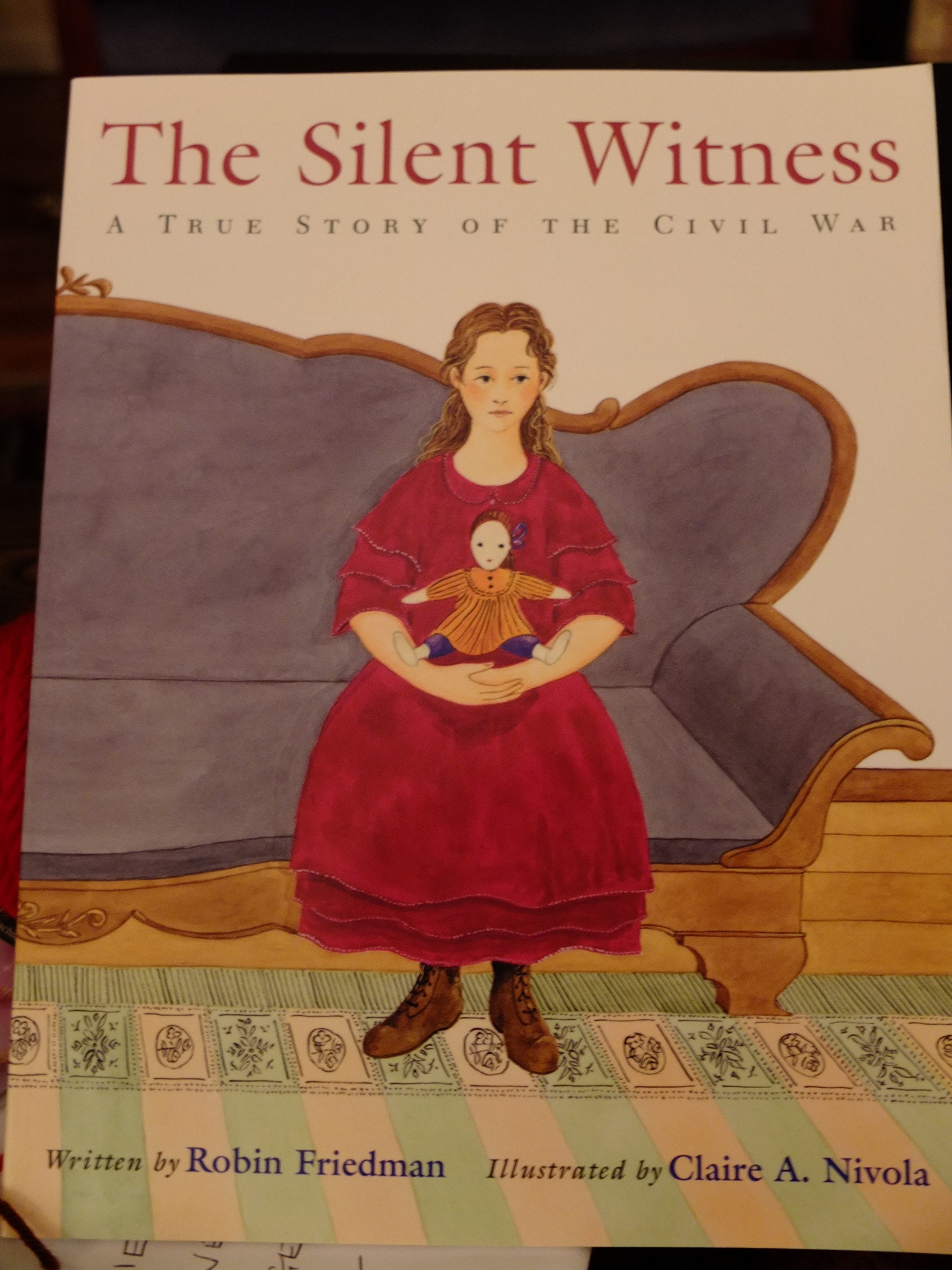After a trip to Charleston, South Carolina in the spring of my eighth grade year, I wrote about what I had learned about the Civil War both from our trip and reading non-fiction and fiction texts about the tumultuous time. One text was a storybook titled “The Silent Witness: A True Story of the Civil War” (written by Robin Friedman and illustrated by Claire A. Nivola), which is the amazing story of a rag doll, who ended up being a surprising witness to the end of the war.
Here’s an excerpt from my writing:
The end of the war came in a small town in Virginia called Appomattox Courthouse, in the McLean family’s parlor. Ironically, the McLean family had moved to Appomattox after the war began in their previous home’s front yard, near a creek called Bull Run. And now Union General Grant and Confederate General Lee filed into the McLean parlor. Nobody witnessed the goings-on in the McLean parlor, nobody but the generals and their aides and the “Silent Witness.” That was what Grant’s aides called the rag doll left in the parlor by Mr. McLean’s nine-year-old daughter. The doll, carefully made by Mrs. McLean out of scraps of old fabric, sat quietly on the couch, and watched General Lee sign the surrender to General Grant. After four long years, the war was over.
The country’s mind now turned to the future. President Lincoln made plans. It would be a time not to mend fences, but to pull them down, to reunite the country in government and spirit. But on April 14, 1865, only four days after the surrender at Appomattox, a famous actor, John Wilkes Booth assassinated Abraham Lincoln. The entire country mourned, both North and South. The North trusted their leader who had gotten them through this terrible war, and knew he would help them move into the future. The South, in its post-war ruin, had at least known that the President was going to forgive, and mend the country back together without punishment. But Andrew Johnson was President now, and he was different.
Andrew Johnson came from Tennessee. He had been a slave owner, but had supported the Union during the Civil War. While on campaign as Abraham Lincoln’s running mate in 1864, he told newly feed slaves, “I will indeed be your Moses, and lead you through the Red Sea of war and bondage to a fairer future of liberty and peace.” But when he became president, Andrew Johnson suddenly seemed to be turning against Union supporters from the South, as he himself had been, and said, “This is a country for white men, and by God, as long as I am president, it shall be a government for white men.” He had no plans to unite the country.
Meanwhile, in the South, those with power were passing laws. They were called “black codes,” and their sole purpose was to keep the newly freed African Americans enslaved. Not slaves in the sense that it had meant for the past hundreds of years: the Emancipation Proclamation and 13th amendment had taken care of that. No, the black codes’ purpose was to keep certain rights from the African Americans, to keep freedom from them. And a new question began to surface: “What is freedom?”
It would take 100 years for that to become clear. It would take the Civil Rights Movement: strong ideas, strong people, and change. The Civil War shaped our country into what it is today. It lies deep in our roots, in an important part of our history. The thoughts behind it were the next steps towards the idea that began way back in 1776: all people are created equal. We still work towards this today.
I encourage you to read “The Silent Witness” to learn more about the doll’s amazing and moving journey.
You can see daily posts on our Facebook page. Just click on the Facebook icon on our web site’s cover page.







